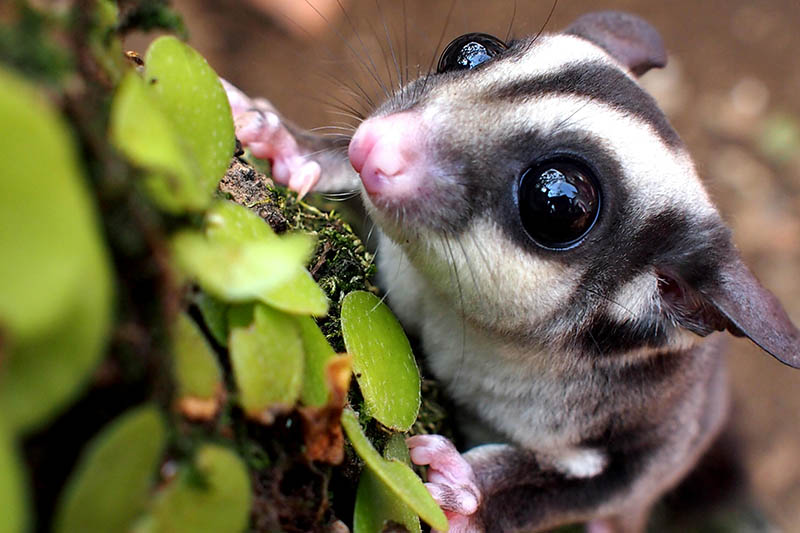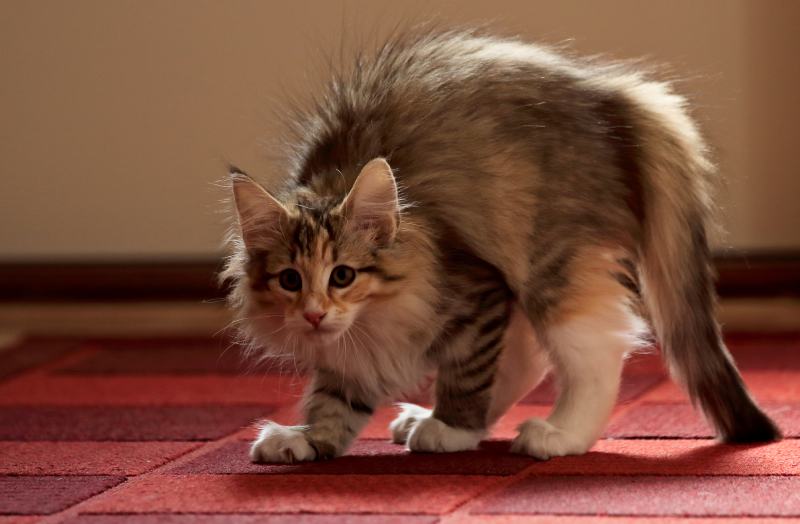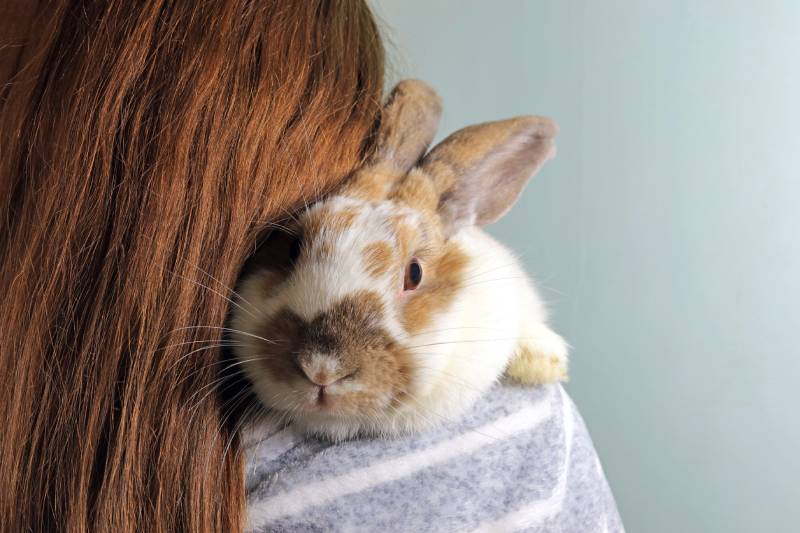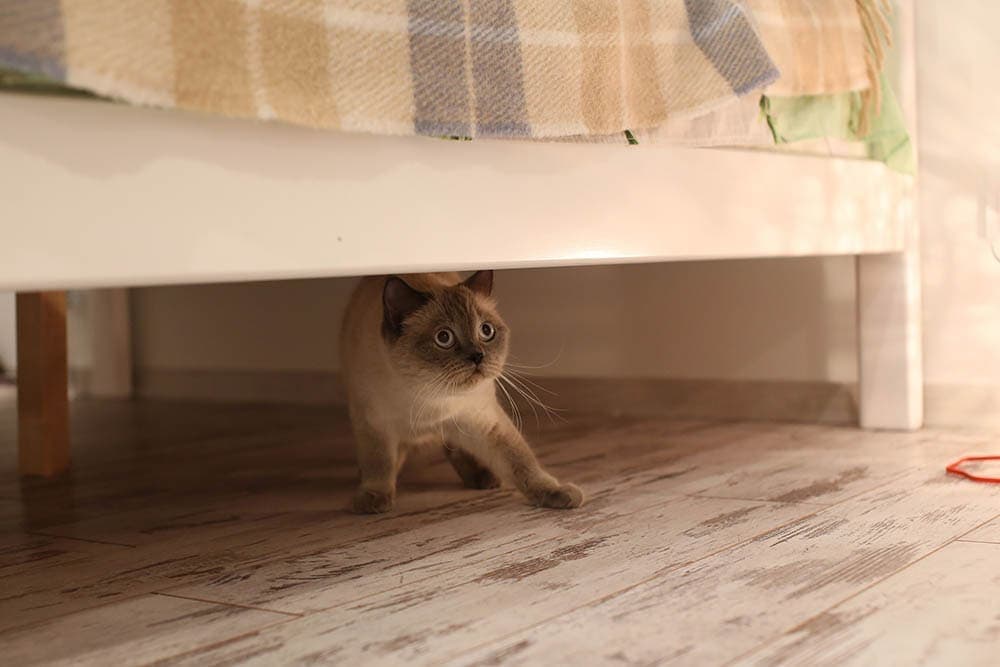VET APPROVED

The information is current and up-to-date in accordance with the latest veterinarian research.
Learn more »Click to Skip Ahead
Sugar gliders are one of the most adorable and fascinating creatures you’ll ever come across. Known for their adorable big eyes, furry tails, and ability to glide through the air, these unique marsupials have somehow made their way from their native Australia into homes to be kept as pets. Their social and often affectionate behavior has endeared them to many humans, but it’s important to know that the sugar glider has some very specific requirements, and keeping one as a pet is not as straightforward as having a domesticated animal like a cat or dog.
When it comes to having a sugar glider as a pet, the first thing to be aware of is that they are tame, not domesticated. This is an important distinction, because it tells us a lot about their behavior and instincts.
Domesticated pets like cats and dogs have undergone a process of selective breeding which has affected their temperament, digestion, and instinctive behavior.
A tame pet like the sugar glider is born with the instincts to survive in a wild environment, which typically involves avoiding human contact, so in order for them to be happy and content pets, we need to overcome those instincts with gentle handling and husbandry that are specific to their needs. Without regular handling and positive interactions, these pets will become wary of humans and revert to their more natural instinctive behaviors.
Of course, some of these instincts can be difficult to overcome, and like any animal, a scared or stressed sugar glider will try to protect itself by escaping, hiding, or biting. In this post, we’ll dive into the world of sugar gliders and learn more about their behavior, needs, and whether they pose a danger, however small, to their owners.

Do Sugar Gliders Bite?
Yes, though in fairness, anything with a mouth can indeed bite, and sugar gliders can exhibit some challenging behaviors, including biting. While sugar glider biting can be alarming and painful, it’s crucial to understand that it’s a natural behavior that can stem from various causes. Let’s look at some of them and potential solutions.
The 6 Common Causes of Sugar Glider Biting
Sugar gliders are social animals that require interaction with their owners to thrive. They also have a unique personality and behavior that can vary from one glider to another. Therefore, understanding the underlying causes of sugar glider biting can be challenging. Here are some of the most common reasons why sugar gliders bite.
1. Fear
Fear is one of the most common causes of sugar glider biting. Sugar gliders are prey animals, which means that they’re hardwired to be cautious and defensive. So, if they feel threatened or scared, they might bite as a defense mechanism. For example, if you approach your sugar glider too quickly or aggressively, they might perceive you as a predator and react by biting.
To prevent fear-based biting, it’s essential to approach your sugar glider slowly and calmly. Avoid sudden movements or loud noises that might startle your pet – especially if they’re still a new pet. Also, try to establish trust and a bond with your sugar glider by spending time with them and offering treats and rewards.
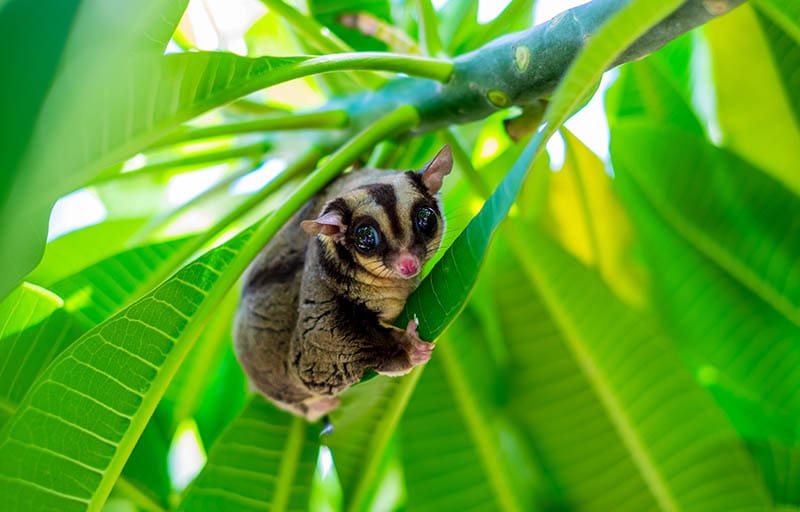
2. Curiosity
At other times, a sugar glider might bite you out of curiosity. This is especially true if you smell strange or new to them, or if your hands smell like a food item that has piqued your pet’s curiosity.
3. Grooming You
As social animals, sugar gliders often groom one another (a phenomenon known as allogrooming). If your pet has bonded with you, they may try to “groom” you – this can sometimes culminate in the form of “grooming bites”.
4. Playfulness
Believe it or not, sugar gliders can also bite out of playfulness. Sugar gliders are active and curious animals that love to explore and play. However, sometimes their playfulness can turn into nipping or biting (just like dogs), especially if they are overstimulated or excited.
To prevent playful biting, it’s essential to provide your sugar glider with enough stimulation and playtime. However, you should also establish boundaries and teach your sugar glider what is appropriate and what is not. So, for example, you can use toys or treats to redirect your sugar glider’s attention when they start to bite or nip.
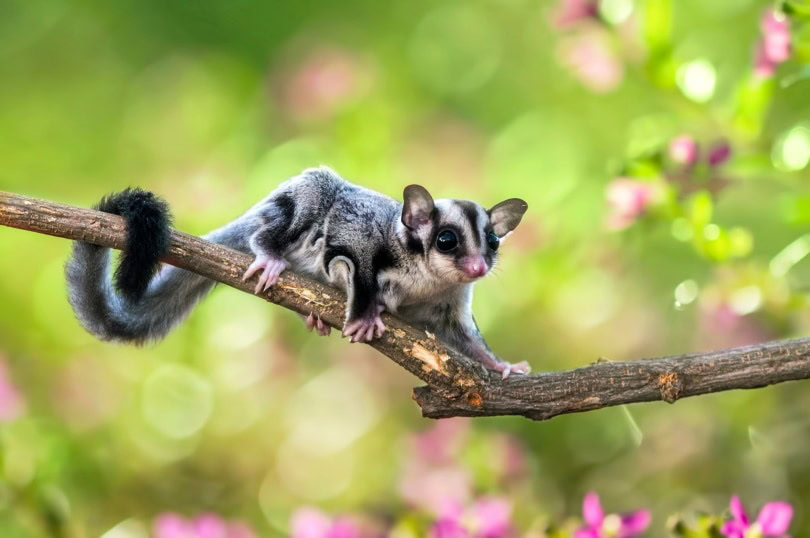
5. Health Issues
Sometimes, sugar gliders might bite because they are not feeling well. Health issues such as dental problems, infections, or injuries can cause pain and discomfort that might make your sugar glider more irritable or aggressive. Therefore, it’s crucial to monitor your sugar glider’s health and behavior regularly.
If you suspect that your sugar glider is biting because of a health issue, it’s important to seek veterinary care immediately. A qualified vet can diagnose and treat your sugar glider’s condition and provide you with advice on how to manage the biting behavior.
6. Aggression
Aggression is a final (but very rare) cause of sugar glider biting. Although sugar gliders are generally friendly and social animals, they can become territorial or aggressive towards other gliders or humans. Male sugar gliders, in particular, can be more aggressive during mating season.
If your sugar glider is exhibiting aggressive behavior, it’s essential to identify the trigger and address it accordingly. For example, if your sugar glider is aggressive towards another glider, it might be necessary to separate them or provide more space and resources. If your sugar glider is aggressive towards you, it might be necessary to establish boundaries and reinforce positive behavior.

How to Prevent Sugar Glider Biting
Preventing sugar glider biting requires early socialization, bonding, and training. Here are some practical tips to help you prevent sugar glider biting.
Early Socialization
Like with dogs, early socialization is the key to preventing fear-based biting in sugar gliders. Socializing your sugar glider from a young age can help them establish trust and a bond with you and other humans. It can also help your sugar glider become more comfortable and confident in new environments and situations.
To socialize your sugar glider, you should handle them regularly and gently. Offer treats and rewards to reinforce positive behavior and avoid punishment or negative reinforcement. You should also introduce your sugar glider to different people, animals, and environments gradually and in a controlled manner.
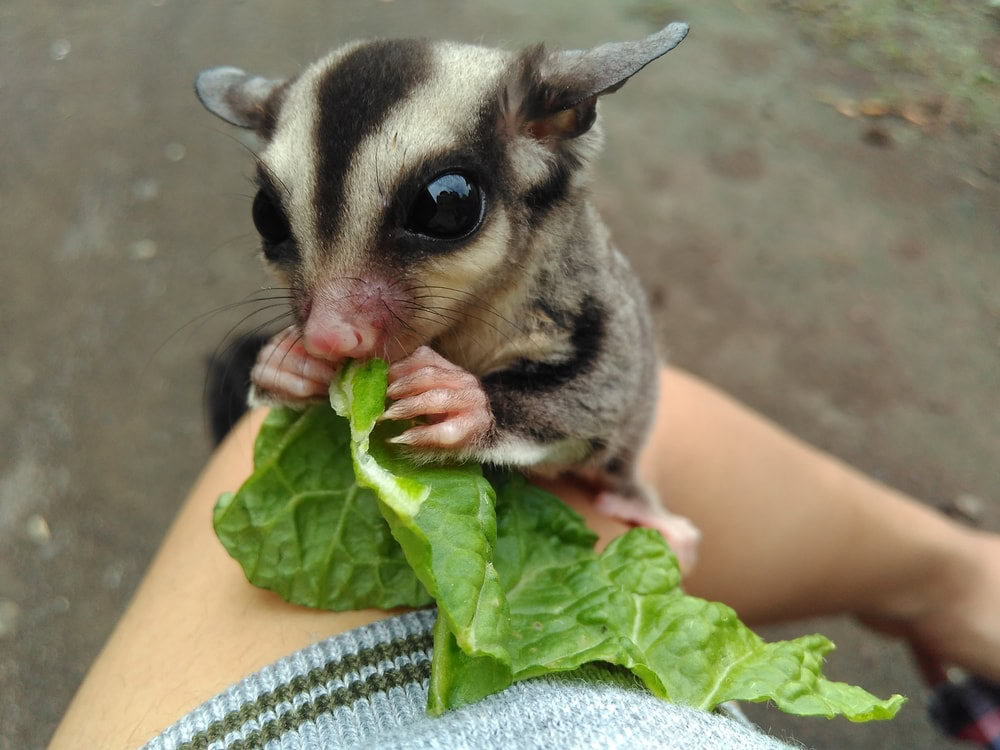
Bonding
Bonding is another essential aspect of preventing sugar glider biting. Bonding involves spending time with your sugar glider and establishing a close relationship based on trust and affection. Bonding can help your sugar glider become more comfortable and secure around you, which can reduce the risk of biting.
To bond with your sugar glider, you should spend time with them every day. You can hold them on your lap, play with them, or simply sit near their cage and talk to them. You should also offer treats and rewards to reinforce positive behavior, such as coming to you when called or climbing onto your hand.
Training
Training can also help prevent sugar glider biting by teaching your pet what is appropriate and what isn’t. This can also help your sugar glider become more obedient and responsive to your commands, which can reduce the risk of biting.
To train your sugar glider, you can use positive reinforcement techniques such as clicker training or reward-based training. You should also start with simple commands, such as coming to you when called or sitting on your hand, and gradually increase the difficulty. You should also be patient and consistent and avoid punishment or negative reinforcement.

How to Manage Sugar Glider Biting
Managing sugar glider biting requires handling techniques, positive reinforcement, and distraction. Here are some practical tips to help you manage sugar glider biting.
Handling Techniques
Handling techniques can help you manage sugar glider biting by reducing the risk of injury and preventing fear-based biting. When handling your sugar glider, you should use a gentle and firm grip and avoid squeezing or restraining them. You should also avoid grabbing your sugar glider by the tail, as this can cause pain and injury.
If your sugar glider starts to bite, you should remain calm and avoid jerking your hand or pulling away. Instead, you should gently blow on your sugar glider’s face or offer a distraction, such as a toy or treat. You should also avoid punishing or scolding your sugar glider, as this can make the behavior worse.
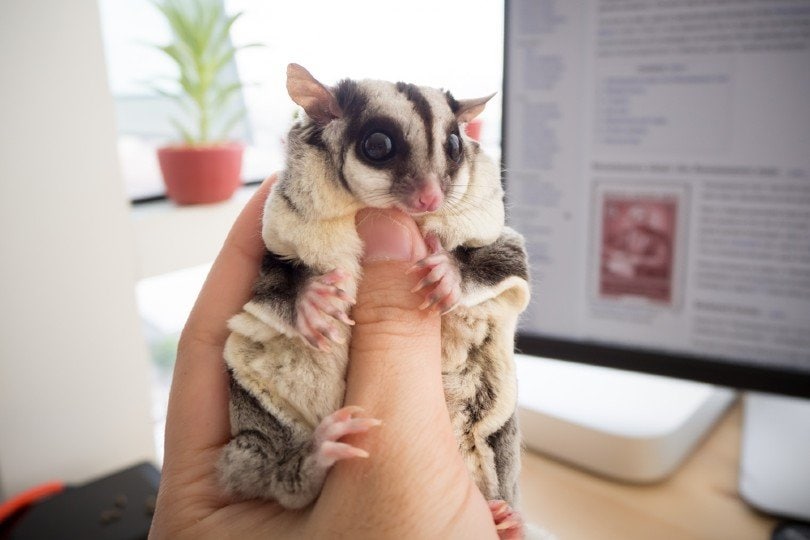
Positive Reinforcement
Positive reinforcement can also help you manage sugar glider biting by reinforcing positive behavior and reducing the risk of aggressive or fear-based biting. So, this involves rewarding your sugar glider for good behavior, such as coming to you when called or sitting on your hand.
To use positive reinforcement, you should offer treats and rewards immediately after your sugar glider exhibits positive behavior. You should also use a consistent and clear reward system, like a clicker or a verbal cue, to reinforce the behavior. And again, avoid punishing or scolding your sugar glider.
Distraction
Distraction can also help you manage sugar glider biting by redirecting your pet’s attention and reducing the risk of playful or overstimulated biting. When your sugar glider starts to bite, you should offer a distraction, such as a toy or treat, to redirect their attention.
To use distraction, you should have a variety of toys and treats available for your sugar glider. You should also rotate the toys and treats regularly to keep your sugar glider interested and engaged. You should also avoid using your hands or fingers as toys, as this can encourage biting.
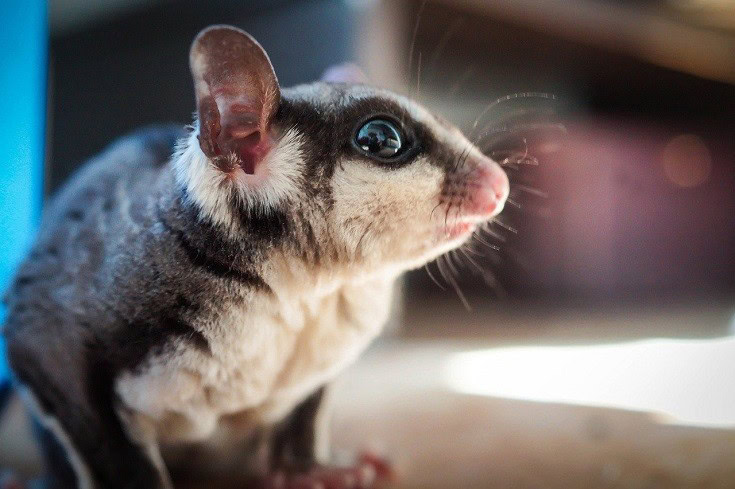
Approach Cautiously
Even the most well-behaved sugar glider can bite if startled. As such, you should always approach them cautiously and try your best to not startle them. Sugar gliders are naturally nocturnal; disturbing their slumber during the day may startle them into biting you.
Gloves
If you have a particularly bitey sugar glider on your hands, the first thing to do is to take it to your vet to make sure there isn’t an underlying health issue that is causing this behavior. Once you have the all clear, we need to overcome this behavior by getting back to the basics of gentle handling, bonding, and positive reinforcement.
The trouble is, if your pet bites you when you handle it, you may be less inclined to handle them, making the problem even worse. By wearing a thin pair of gloves – you don’t want thick, cumbersome gloves that may make handling more difficult – you can create a bit of a buffer between those teeth and your skin, allowing you to more safely and pleasantly build trust with your pet.

Understanding Sugar Glider Body Language
Understanding sugar glider body language is essential for identifying signs of stress, fear, and aggression. Sugar gliders communicate through a variety of body signals, such as posture, vocalization, and scent marking.
Here are some common signs of sugar glider body language:
- Stiff posture: A sugar glider with a stiff posture might be feeling threatened or defensive. It might also be preparing to attack or flee.
- Hissing: A sugar glider that hisses might be feeling scared or agitated. It might also be warning you to stay away.
- Crabbing: A sugar glider that crabs, or makes a scared noise, might be feeling threatened or cornered. It might also be trying to intimidate you or other animals.
- Scent marking: Sugar gliders use scent marking to communicate with other gliders and mark their territory. Scent marking can include rubbing their scent glands on objects or urinating on surfaces.

Conclusion
In conclusion, sugar glider biting can be a challenging behavior to manage, but it’s essential to understand that it’s a natural behavior that can stem from various causes. By understanding the underlying causes and implementing practical solutions, you can prevent and manage sugar glider biting and ensure a happy and safe relationship with your furry friend. With patience, training, and consistency, you can enjoy a long and rewarding relationship with your sugar glider.
Featured Image Credit: acr23, Shutterstock
